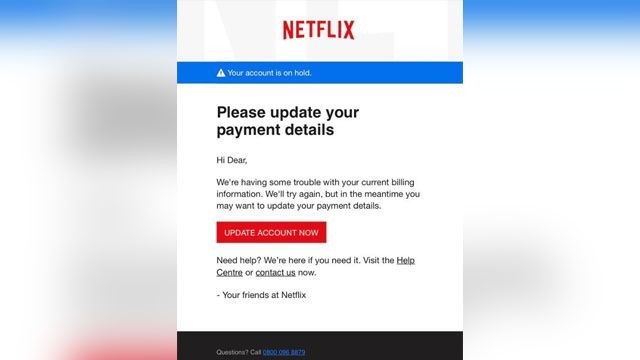
Scammers will use text or email messages to get your personal information. There are many things you can do in order to protect yourself against phishing attacks.
How to recognize Phishing
Scammers may use text or email messages to lure you into providing your personal information. They might try to get your account numbers, passwords, and Social Security numbers. They could have access to your bank account, email, and other accounts if they obtain this information. These phishing scammers are able to launch thousands of attacks every day, and many of them succeed. According to the Internet Crime Complaint Center of the FBI, people lost $57 Million in phishing scams within a single year.
Scammers are known to change their tactics frequently. However, there are signs that can help you identify a phishing email or text.
Phishing email and text messages can look like they are from a company that you trust. These messages may appear to be from a bank or credit card company, a social network site, an app or online store, or even a payment website.
Phishing email and text messages may tell you a story to get you to click on a link or open an attachment. They could:
- Say they have noticed suspicious activity or attempted log-ins
- Claim that there is a problem in your account or with your payment information
- You must confirm certain personal information
- Include a fake invoice
- We want you to click on the link to make a purchase
- If you are eligible, you can register for a government reimbursement
- Offer a coupon to get free stuff
Imagine that you received this email in your inbox. Are you able to see signs it is a scam? Let’s take another look.
- It looks like an email from Netflix. The email even has a Netflix header and logo.
- Your email states that your account is currently on hold due to a billing issue.
- This email uses a generic greeting: “Hi Dear.” It is unlikely that the account has an identical greeting.
- You are invited to click on the link in the email to change your payment details.
Although it may appear real at first glance, the email is not. These email scammers are not connected to the companies they claim to represent. People who provide their details to scammers can be subject to serious consequences if they send phishing emails. They can also damage the reputation of the businesses they are spoofing.
How to Protect Yourself from Phishing Attacks
Many phishing emails may be blocked by your email spam filters. Scammers will always try to outsmart spam filters so it’s a smart idea to add additional layers of protection. These are the four steps that you can take to protect yourself against phishing attacks.
Here are four steps to protect yourself from phishing
1. Use security software to protect your computer. You can set the software to automatically update so that it can handle any new security threats.
2. Set software to automatically update your mobile phone. These updates can provide the protection you need against security threats.
3. Multi-factor authentication is a way to protect your accounts. Multi-factor authentication is a method of increasing security that requires two or more credentials to log into your account. Multi-factor authentication is what this is. You can use two types of additional credentials to log into your account:
- You have something you have, such as a passcode that you receive via an authentication app.
- You are what you scan — your fingerprint, retina, or face.
- Multi-factor authentication makes it more difficult for fraudsters to log into your accounts, even if they get your username or password.
4. Backup data is important. Backup your data and ensure that they aren’t connected directly to your home network. Copy your files to an external hard disk or cloud storage. You can also back up your phone’s data.
What to do if you suspect a Phishing Attack
You may get an email, text message or phone call asking you to open an attachment or click on a link.
If you get a “No”, it may be a phishing scheme. Review the How to recognize Phishing tips and look out for signs that it is a scam. Report them and delete the message if you find them.
If you get a “Yes”, contact the company by calling the number or visiting the website. The email may not contain the correct information. Malicious malware can be installed by attaching files and linking to them.
How to Respond to a Phishing Email
IdentityTheft.gov is the place to go if you suspect that a fraudster has access to your personal information. You’ll find the steps you need to take based upon the information you have lost.
Update your security software if you suspect that you clicked on a malicious link or opened an email attachment that contained malware. Next, run a scan.
How to Report Phishing
Report any phishing emails or texts you receive. Your information can be used to fight scammers.
Step 1. If you got a phishing email, forward it to the website of the Anti-Phishing Working Group, which is reportphishing@apwg.org. You can also send phishing text messages to SPAM (7726).
Step 2. Report the attack to ReportFraud.ftc.gov.
Call SpartanTec, Inc. now and let our team of IT experts bolster your security against phishing and other forms of online attacks.
SpartanTec, Inc.
Columbia, SC 29201
(803) 408-7166
http://manageditservicescolumbia.com/
Serving: Myrtle Beach, North Myrtle Beach, Columbia, Wilmington, Fayetteville, Florence

No comments:
Post a Comment